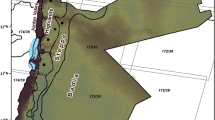Abstract
The Indian experience, in use of remotely sensed data for land use/land cover analysis, gained over past many years through the implementation of various projects. The satellite IRS-1C which was launched on December 28th, 1995 provided a new dimension to the mapping capability of land use/land cover analysis on various scales. Based on different studies, it is concluded that WiFS data can be used for level-I classification for national and regional level applications, whereas LISS-III alone can be use up to level-III for subregional scale and a combination of LISS-III and PAN data can be used for village-level information. IRS-lC data have been extremely useful in the generation of district-wise land used and cover maps, depicting the information up to level-II on 1:250,000 scale for land use planning and National Wasteland Inventory Project. A systematic study was carried out to identify and map 13 different types of wastelands on 1:50,000 scale up to village and micro-watershed level for some districts using IRS 1C data. A digital data with standard codification system in four different spatial layers were generated for the entire country, and about 63.85 million ha have been estimated as wastelands through this study. Various watershed programs are being implemented in the country consulting this database. A successor to this project “Monitoring of Wastelands,” which aim at reporting the changes in wastelands statistics in India, considering various developmental programs launched by Govt. of India since early 1990 has been implemented using IRS 1C data.














Similar content being viewed by others
References
Food and Agricultural Organization (FAO), (2000). Land cover classification system: Classification concepts and use manual.
Gautam, N. C., Ravi Shankar, G., Narasimha Rao, K., Nagaraja, R., Saxena, M. R., Jayanthi, S. C., & Suresh, L. S. (2000). Statistical analysis of land use/land cover over India using satellite based remote sensing techniques. Indian Journal of Agricultural Economics, 55(2), 19–28.
Mahdavi, A. (2010). IRS-1C image data applications for land use/land cover mapping in Zagros region, Case study: Ilam watershed West of Iran. Caspian Journal of Environmental Sciences, 8(1), 35–34.
Nagaraja, R., Gautam, N.C., (1996). The role of remote sensing and GIS in wasteland management in India. In M. J. Eden, & J. T. Parry (Eds.), Land degradation in the tropics—environmental and policy issues, published common wealth foundation. McGraw Hill Publication. ISBN: 1-85567-389-4.
Nagaraja, R., (2002). Land Use/Land Cover studies using Remote Sensing data: Indian experience. In Commission VII Symposium “Resource and Environmental Monitoring”, Vol. 34, Part 7, 3–6 Dec Hyderabad, India, ISPRS archives.
National Remote Sensing Agency (NRSA), (1985). Survey report on wasteland mapping of India, Hyderabad, pp 1–10.
National Remote Sensing Agency (NRSA), (1989). Manual of Nationwide land use/land cover mapping using visual interpretation techniques, Part–1, Hyderabad, pp 1–58.
National Remote Sensing Agency (NRSA), (1992). A report on reconciliation of land use/land cover statistics generated by remote sensing and ground based techniques, Hyderabad, pp 1–80.
National Remote Sensing Agency (NRSA), (1995). All India report on area statistics of land use/land cover generated using remote sensing techniques, Hyderabad, pp 1–71.
National Remote Sensing agency (NRSA), (2000). Wastelands atlas of India, pp 1–25.
National Remote Sensing agency (NRSA), (2005). Wastelands Atlas of India, pp 1–95.
Parveen, R., Kulkarni, S., Mytri, V. D. (2016). Vegetation extraction based on spectral deviations using an IRS-1C LISS III image. In: International Conference on Wireless Communications, Signal Processing and Networking (WiSPNET), Chennai, pp. 158–162. https://doi.org/10.1109/WiSPNET.2016.7566111.
Parveen, R., Kulkarni, S., & Mytri, V.D. (2017). An approach for vegetation mapping and pixel-based change detection for IRS-1C LISS III data. Journal of Geomatics, 11(2).
Rajender, T., et al. (2010). Database creation using high resolution 1RS PAN+LISS III satellite data for ecological modelling of Himalayas under GIS environment—a study in Shiwalik range, Himachal Pradesh, India. Current Science, 98, 944–949.
Prasad, R. C., Rajan, K. S., Dutt, C., & Roy, P. S. (2010). A conceptual framework to analyze the land-use/land-cover changes and its impact on phyto diversity: A case study of North Andaman Islands India. Biodiversity and Conservation, 19, 3073–3087. https://doi.org/10.1007/s10531-010-9880-3.
Rao, D. P., Gautam, N. C., Nagaraja, R., & Mohan, P. R. (1996). IRS-IC applications in land use mapping and planning. Current Science, 70(7), 575–581.
Roy, P. S., & Giriraj, A. (2008). Land use and land cover analysis in Indian context. Journal of Applied Sciences, 8, 1346–1353.
RRSSC, (1990). Manual of nationwide land use/land cover mapping using digital techniques, Part-11, Nagpur, February, pp. 1–78.
Saha, A. K., Arora, M. K., Csaplovics, E., & Gupta, R. P. (2005). Land cover classification using IRS LISS III image and DEM in a rugged terrain: A case study in Himalayas. Geocarto International, 20(2), 33–40. https://doi.org/10.1080/10106040508542343.
Acknowledgements
The author is thankful to all the team members of Nationwide Land Use/Cover mapping for Agro-Climatic Zone Planning Project and NWIP project from NRSA and different collaborating agencies for their contribution to the project and sharing of results and experiences that are described in this paper.
Author information
Authors and Affiliations
Corresponding author
Additional information
Publisher's Note
Springer Nature remains neutral with regard to jurisdictional claims in published maps and institutional affiliations.
About this article
Cite this article
Nagaraja, R., Kumar, R., Kesava Rao, P. et al. IRS-1C Applications in Land Use/Land Cover Studies: Indian Experience. J Indian Soc Remote Sens 49, 97–109 (2021). https://doi.org/10.1007/s12524-020-01292-4
Received:
Accepted:
Published:
Issue Date:
DOI: https://doi.org/10.1007/s12524-020-01292-4




